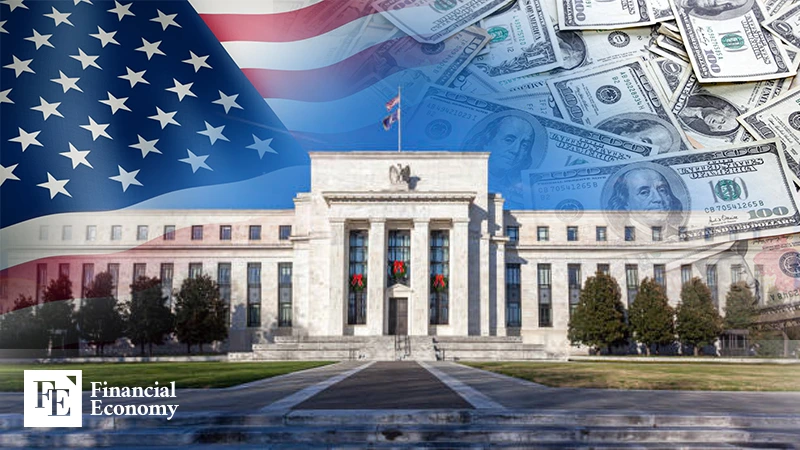Fed Stays Guarded on Rates Amid Tariff Pressures, Critics Push for Cuts
Input
Modified
Fed Officials Say “Not Enough Data to Cut Rates” Trump’s Tariff Shock Seen Driving Central Bank Caution Some Experts Still Argue for Interest Rate Cuts

The U.S. Federal Reserve is leaning toward keeping interest rates unchanged in September, as concerns mount that President Donald Trump’s aggressive trade policies could reignite inflation. Officials argue the central bank needs more time to assess market dynamics before making any cuts. Still, some analysts contend the Fed should begin lowering rates now, citing strains in the labor market and other economic indicators.
Fed Leans Toward Holding Rates
On August 21, Jeffrey Schmid, president of the Kansas City Federal Reserve Bank, cast doubt on the likelihood of a rate cut in September, telling CNBC it is too early to declare victory in the fight against inflation. “The final stretch toward the 2% inflation target looks quite difficult,” he said. “Inflation is still closer to 3% than 2%, and we still have work to do.” His remarks echoed the July 29–30 FOMC meeting minutes released a day earlier, where he described the U.S. labor market as “resilient.” With prices still elevated and employment strong, he signaled there is little justification for rushing into rate cuts.
Other Fed officials echoed the cautious stance. Loretta Mester, president of the Cleveland Fed, told Yahoo Finance that the current data does not support a September cut. “We’ll have plenty of new data between now and September, and I’ll approach each meeting with an open mind,” she said. “But if the decision were tomorrow, based on the information I have today, I see no reason to cut.” She added that the Fed must stay focused on bringing inflation down to its 2% target.
Tariff War Fallout Comes Into Focus
Fed officials’ caution is rooted in concerns over the fallout from President Donald Trump’s tariff policies. According to the July FOMC minutes, policymakers noted that “the effects of tariffs are becoming more evident in goods prices, though the overall impact on inflation remains under review,” adding that more time is needed to assess the scale and persistence of tariff-driven inflation.
The inflationary pressure triggered by tariffs has only recently begun to surface. Data from the Bureau of Labor Statistics showed that U.S. producer prices (PPI) rose 0.9% in July from the prior month—far above Wall Street expectations of a 0.2% increase and the sharpest monthly rise since June 2022. On a year-over-year basis, PPI climbed 3.3%, again beating forecasts of 2.5%. This contrasted with the consumer price index (CPI), which in July matched expectations and remained relatively stable.
Analysts warn that tariff-driven inflation is likely to accelerate soon, as PPI is generally seen as a leading indicator for CPI. Clark Geranen, chief market strategist at CalBay Investments, noted: “The fact that PPI came in hot while CPI stayed moderate means companies are still absorbing tariff costs instead of passing them on. But they won’t do so indefinitely—eventually, those costs will be shifted to consumers.”

“Too Late Already,” Critics Warn
Some economists argue the Federal Reserve can no longer afford to delay rate cuts. Mohamed El-Erian, chief economic adviser at Allianz and former PIMCO CEO, told CNBC on August 20 that the Fed “should have cut rates last month,” adding that Chair Jerome Powell’s hesitation may mean “it’s already too late.” His remarks effectively aligned with President Donald Trump, who has long accused Powell of being “too late” to act.
El-Erian criticized the Fed’s reliance on data-dependent decision-making, saying, “If you only look at backward-looking data, by the time you realize what should have been done months earlier, it’s already too late.” He recalled Powell’s stance during the COVID-19 pandemic, when the Fed kept rates near zero on the assumption that inflationary pressures would be “transitory.” Instead, inflation surged above 9% the following year, forcing a rapid cycle of aggressive rate hikes. “The Fed made a major mistake then, and now risks making another by acting too late,” El-Erian warned.
Even within the Fed, some officials support preemptive cuts. Michelle Bowman, the Fed’s Vice Chair for Supervision, said at a Kansas Bankers Association event in Colorado on August 9 that she still expects “three rate cuts this year” and that recent labor market data reinforce her view. With inflation risks seen as limited, she argued the Fed should move early to offset potential labor market weakness. “Tariff-driven price increases are likely to be temporary,” Bowman said. “Once those effects fade, inflation should return to 2%.” She added that monetary policy works with a lag, warning that “delayed action could lead to further deterioration in labor conditions and slower growth.”





















